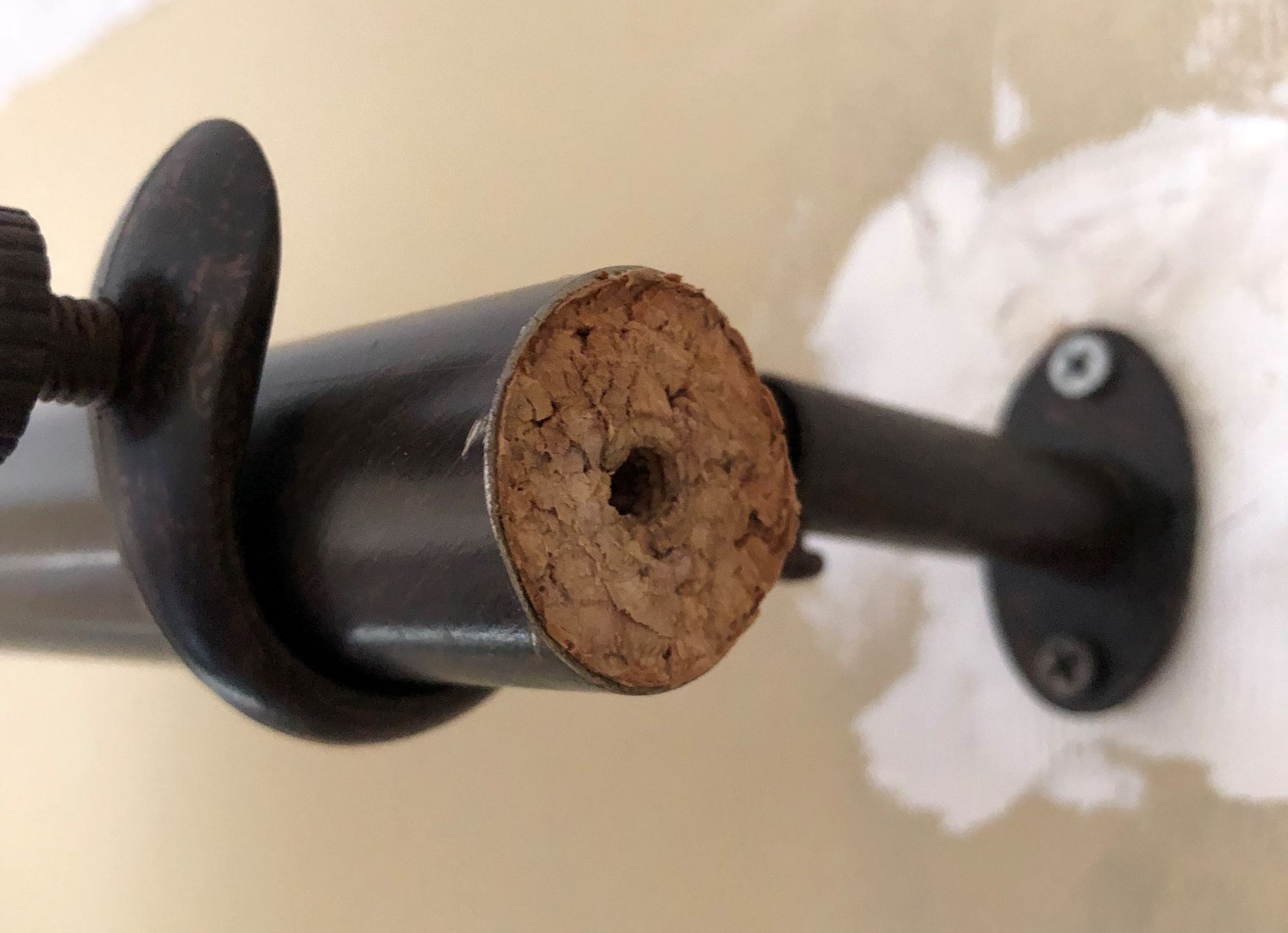Drapery rod finial rescue
Use a cork to replace a spring threaded tube insert and give your drapery rods or metal tube furniture a new lease on life.

The sitrep
If you've ever worked with large diameter drapery rods with fan-dancy finials, you might have experienced this situation. There is an insert that lets you screw in the finial and keep it nice and tight. The problem occurs when this handy little gadget slips down the tube and out of reach of the finial's threaded connector.
An easy fix, you say? Unfortunately, these spring steel threaded tube inserts are designed to go one way into the tube (see the image below). The dish-shaped spring steel portion will dig into the tube walls when you attempt to pull it up towards the open end. This is actually a cool feature in normal situations. The resistance to pulling out allows you to screw the finial down tight, battening the finials if you please.

Enter the humble cork
Why do these inserts move out of reach? I can only speculate; Murphy, gremlins, manufacturing lubricants left in the tube, karma...they just do. I've encountered slipped inserts in drapery rods, metal beds, and other items. Fortunately, there is a simple fix, a cork.
What you'll need
To pull off this simple fix, you'll need the following items from your toolkit:
- A cork of the correct diameter.
- A knife to trim the cork after insertion.
- Super-glue.
- Drill and bit slightly smaller than the diameter of the finial's bolt.

Make it happen
For these types of fixes, a champagne cork may be the best choice. That is what I used to repair my drapery rods because the rods had a little over a 1" inner diameter.
- If you are using a champagne cork, cut off the top with your knife. If you are using a regular cork, proceed directly to step 2.
- Drill a hole as close to the center of the cork as possible.
- Note: You want a drill bit with a smaller diameter than the finial's screw to allow material for the threads to grip.
- Apply your glue to the cork and insert the narrow end into the tube.
- Tip: You do not need to apply the glue on the entire cork, just the first half. As you push the cork in, the glue is spread to the rest of the cork.
- Push the cork as far into the tube as possible. Pressing it on the floor is a good way to do this. Just be sure to put a rag or paper on the floor to catch any excess glue that drips out.
- Let the glue dry for a few minutes.
- Trim the cork flush with the end of the tube, if necessary.
- Thread the finial into the cork, and you are done!

This technique has saved the bacon for me many times. Corks are a versatile, if little understood, part of many fixes.
Alternative methods
Like many fixes you'll undertake, there are other methods to accomplishing your end goal. Here are a couple of options to consider, although I recommend the approach already described.
- With a long rod or wooden dowel, drive the spring threaded insert out the far end of the drapery rod and reinsert to the correct depth.
- Note: This does not always work. I know. Why? It was already slipping, so it tends to keep doing it. Also, you need to have a two-part rod for this to work. Otherwise, you'll hit the retaining nut at the other end. Thanks, Clark, for the catch!
- Go to your favorite hardware emporium and buy replacements. You'll need to know the inner diameter of the rod or tube. Look for them in the fasteners aisle. Or, order online from a source like InsertsDirect.com.
- Scrap the old and buy new - just kidding. The whole idea of this site is to help you reuse or repurpose.
Keep an eye out for other handy ways to use corks for a simple fix around your domicile.
